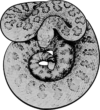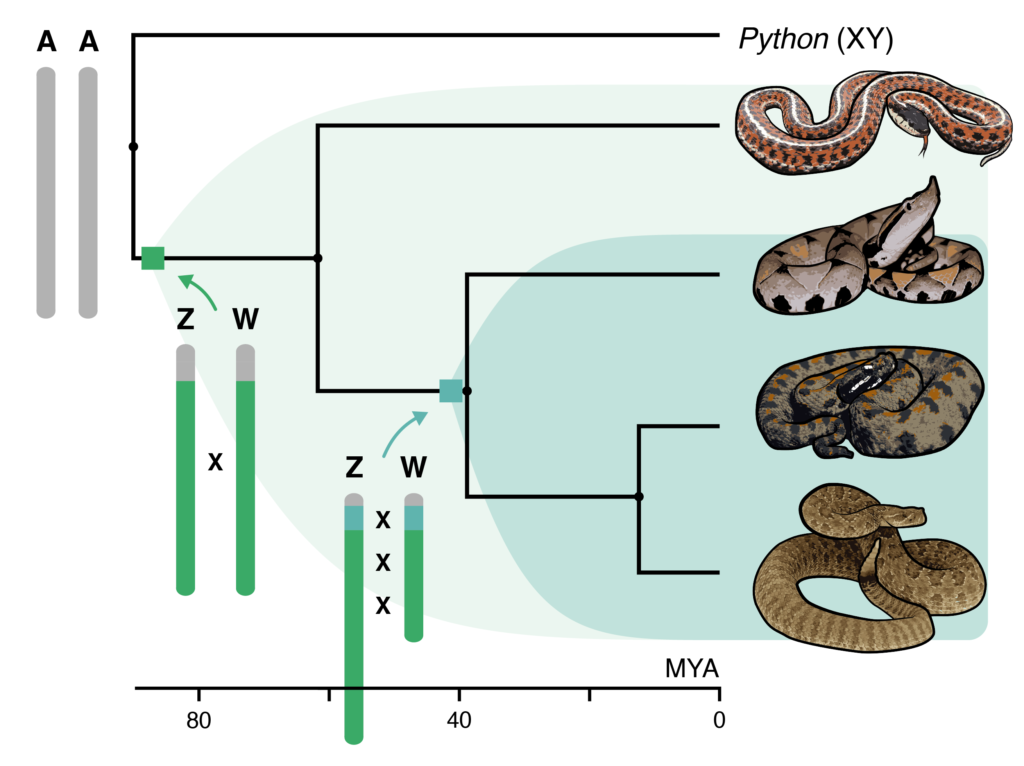Congrats to lab alum Drew Schield and other current and former students (Aundrea Westfall, Blair Perry, Daren Card, and Giulia Pasquesi) on a new paper that characterizes the first snake W chromosome, from a rattlesnake.
Schield, D.R., B.W. Perry, D.C. Card, G.I.M. Pasquesi, A.K. Westfall, S.P. Mackessy, and T.A. Castoe. 2022. The rattlesnake W chromosome: a GC-rich retroelement refugium with retained gene function across ancient evolutionary strata. Genome Biology and Evolution. In Press PDF
Sex chromosomes diverge after the establishment of recombination suppression, resulting in differential sex-linkage of genes involved in genetic sex determination and dimorphic traits. This process produces systems of male or female heterogamety wherein the Y and W chromosomes are only present in one sex and are often highly degenerated. Sex-limited chromosomes (e.g., Y and W) contain valuable information about the evolutionary transition from autosomes to sex chromosomes, yet detailed characterizations of the structure, composition, and gene content of sex-limited chromosomes is lacking for many species. In this study, we characterize the female-specific W chromosome of the Prairie Rattlesnake (Crotalus viridis) and evaluate how recombination suppression and other processes have shaped sex chromosome evolution in ZW snakes. Our analyses indicate that the rattlesnake W chromosome is over 80% repetitive and that an abundance of GC-rich mdg4 elements has driven an overall high degree of GC-richness despite a lack of recombination. The W chromosome is also highly enriched for repeat sequences derived from endogenous retroviruses and likely acts as a ‘refugium’ for these and other retroelements. We annotated 219 putatively functional W-linked genes across at least two evolutionary strata identified based on estimates of sequence divergence between Z and W gametologs. The youngest of these strata is relatively gene-rich, however gene expression across strata suggests retained gene function amidst a greater degree of degeneration following ancient recombination suppression. Functional annotation of W-linked genes indicates a specialization of the W chromosome for reproductive and developmental function since recombination suppression from the Z chromosome.
.

